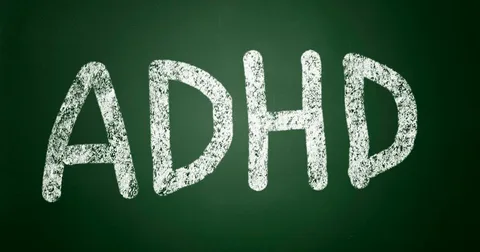Managing adult ADHD requires a multifaceted approach to enhance focus and productivity. Traditional methods are valuable, but innovative techniques can offer fresh perspectives and solutions. This article explores cutting-edge strategies designed to help adults with ADHD thrive in their personal and professional lives.
Understanding Adult ADHD
The Impact of ADHD on Focus and Productivity
Adult ADHD strategy affects various aspects of daily life, including the ability to focus and maintain productivity. Common challenges include:
Difficulty Sustaining Attention:
Trouble staying engaged with tasks for extended periods.
Impulsivity:
Making hasty decisions that can disrupt workflow.
Disorganization:
Struggling to keep track of tasks, deadlines, and responsibilities.
Recognizing these challenges is the first step in implementing effective strategies to improve focus and productivity.
Innovative Techniques for Enhanced Focus
Embracing Technology for Focus
Advancements in technology offer new tools and applications designed to improve focus and manage distractions.
Focus-Enhancing Apps
Several apps are specifically designed to help individuals with ADHD maintain focus and manage tasks.
Forest:
An app that encourages focus by growing a virtual tree while you stay off your phone. If you exit the app, the tree withers.
Focus@Will:
Provides scientifically curated music tracks that can enhance concentration and productivity.
Digital Task Management
Using digital tools to manage tasks can streamline organization and reduce mental clutter.
Trello:
A project management app that uses boards, lists, and cards to organize tasks and projects visually.
Todoist:
A task management app that allows you to create, prioritize, and track tasks across multiple devices.
Implementing the Pomodoro Technique
The Pomodoro Technique is a time management method that involves working in short, focused intervals with regular breaks.
How It Works
Work in Intervals:
Focus on a task for 25 minutes.
Take Short Breaks:
After each interval, take a 5-minute break.
Longer Breaks:
After completing four intervals, take a longer break of 15-30 minutes.
This technique helps maintain focus and prevent burnout by breaking work into manageable chunks.
Utilizing Mindfulness and Meditation
Mindfulness and meditation practices can enhance focus and reduce stress, which is beneficial for managing ADHD.
Mindfulness Practices
Mindful Breathing:
Practice deep breathing exercises to center your mind and improve concentration.
Body Scan Meditation:
A technique that involves paying attention to different parts of your body to enhance self-awareness and focus.
Incorporating Meditation
Regular meditation practice can improve attention span and emotional regulation.
Guided Meditation:
Use apps or online resources for guided meditation sessions tailored to enhancing focus.
Daily Practice:
Set aside a few minutes each day for meditation to build consistency and benefits over time.
Techniques for Boosting Productivity
Implementing Time Blocking
Time blocking involves dividing your day into specific blocks of time dedicated to different tasks or activities.
Creating a Time Block Schedule
Identify Tasks:
List tasks that need to be completed.
Allocate Time Blocks:
Assign specific time periods for each task or activity.
Stick to the Schedule:
Focus on the task during the allocated time block and avoid multitasking.
Time blocking helps manage time more effectively and ensures that each task receives adequate attention.
Leveraging the 2-Minute Rule
The 2-Minute Rule is a productivity technique that encourages tackling tasks that can be completed in two minutes immediately.
How It Works
Identify Quick Tasks:
Determine which tasks can be done in two minutes or less.
Complete Immediately:
Address these tasks right away to prevent them from accumulating and causing stress.
This technique helps reduce procrastination and keeps small tasks from piling up.
Using the “One Thing” Method
The “One Thing” method focuses on prioritizing and completing one key task at a time.
Implementing the Method
Identify the Most Important Task:
Determine the single most important task that will have the greatest impact on your goals.
Focus on That Task:
Dedicate your attention solely to completing this task before moving on to others.
Focusing on one task at a time can improve efficiency and reduce feelings of overwhelm.
Enhancing Organizational Skills
Creating Effective To-Do Lists
To-do lists are essential for managing tasks and responsibilities. Innovative approaches to creating and using to-do lists can improve organization.
Prioritization Techniques
ABCDE Method:
Categorize tasks by priority levels (A, B, C, D, E) to ensure that the most critical tasks are addressed first.
Daily Top 3:
Identify the three most important tasks to complete each day and focus on those.
Task Breakdown
Subtasks:
Break larger tasks into smaller, manageable subtasks to make them less daunting and easier to complete.
Time Estimates:
Estimate how long each task will take to help plan your day more effectively.
Utilizing Visual Aids
Visual aids can enhance organization and productivity by providing clear, visual representations of tasks and deadlines.
Visual Tools
Kanban Boards:
Use boards to visualize tasks, workflows, and project stages.
Gantt Charts:
Create charts to plan and track project timelines and dependencies.
Visual tools help make tasks and deadlines more tangible, improving motivation and organization.
Building and Maintaining Motivation
Setting Achievable Goals
Setting clear, achievable goals can provide direction and motivation.
SMART Goals
Specific: Define clear and specific objectives.
Measurable:
Set criteria for measuring progress and success.
Achievable:
Ensure goals are realistic and attainable.
Relevant:
Align goals with your overall objectives and values.
Time-Bound:
Set deadlines for achieving goals.
SMART goals help maintain focus and motivation by providing clear targets and milestones.
Celebrating Small Wins
Recognizing and celebrating small accomplishments can boost motivation and reinforce positive behavior.
Techniques for Celebrating
Reward Yourself:
Treat yourself to something enjoyable after completing a task or reaching a milestone.
Reflect on Achievements:
Take time to acknowledge and appreciate your progress.
Celebrating small wins helps build confidence and maintain momentum.
Conclusion
Navigating adult ADHD requires a combination of innovative techniques and practical strategies to enhance focus and productivity. By embracing technology, implementing time management methods, and enhancing organizational skills, you can manage ADHD more effectively and improve your overall quality of life. Remember, finding what works best for you may involve experimentation and adjustment, but with persistence and creativity, you can thrive despite the challenges of ADHD.




